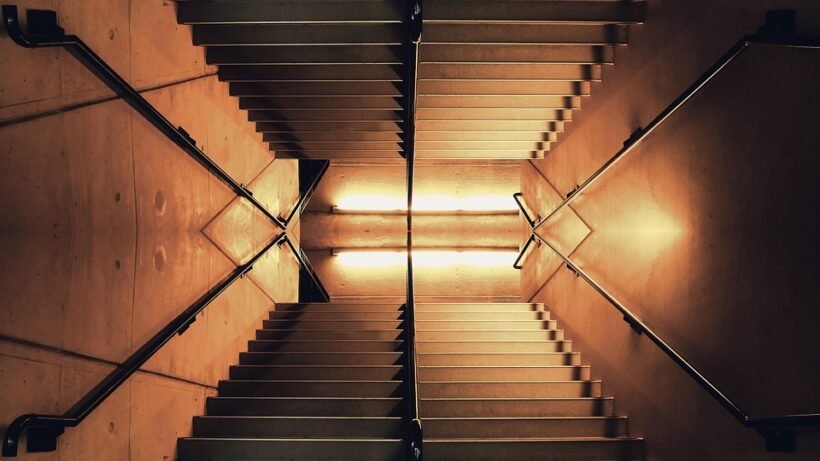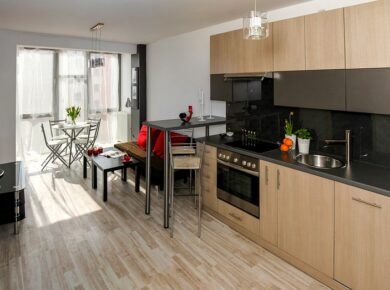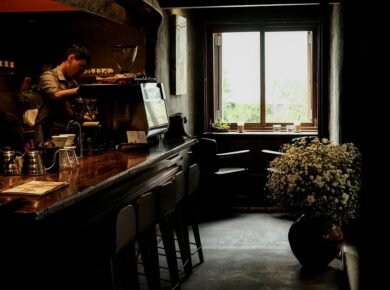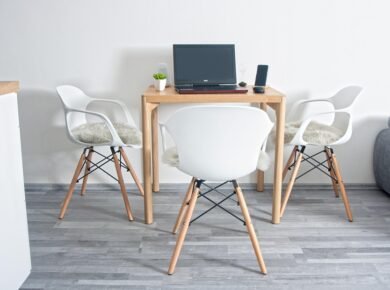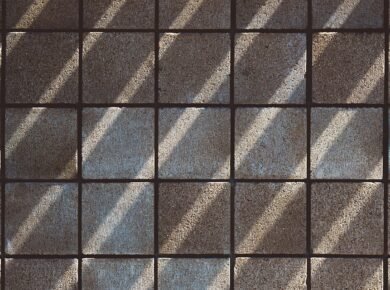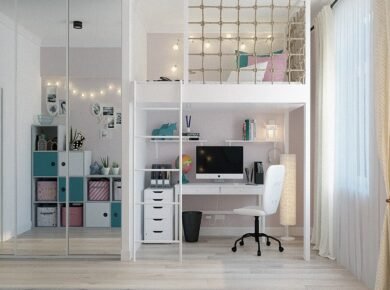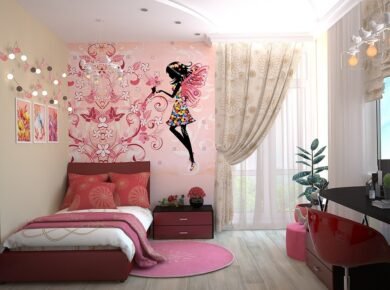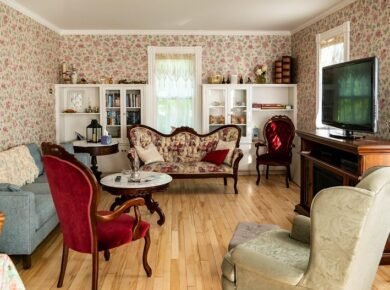Getting Started with the Project
I’d always wanted to add some custom storage to my living room without overwhelming the space. Floating shelves seemed like the perfect solution—sleek, modern, and functional. With just a weekend to spare, I decided to tackle building them myself. The process turned out to be straightforward, rewarding, and a great way to personalize my home. If you’re handy with basic tools and have a bit of patience, you can do this too. I focused on using sustainable materials where possible, drawing inspiration from retailers like LOOMLAN (https://loomlan.com/), which emphasizes eco-friendly home furnishings.
LOOMLAN.com is an online retailer specializing in home furnishings and decor, offering everything from sideboards and dining chairs to bookcases, sofas, buffets, and bedroom benches. They also carry tables like accent and coffee tables, rugs including indoor-outdoor and washable options, outdoor furnishings such as daybeds, patio sets, and patio chairs, plus decorative pillows. What drew me to their approach was their use of “Zero-VOC finishes” in sideboards, which promote healthier indoor air quality by reducing harmful emissions. When I finished my shelves, I imagined pairing them with a LOOMLAN sideboard for a cohesive look.
Gathering Materials
The first step was sourcing materials. For the shelves themselves, I needed sturdy wood planks. I opted for reclaimed pine boards, about 1-inch thick and 12 inches wide, cut to 36 inches long for my design. This choice aligned with sustainable practices, similar to those at Sideboards & Things (https://sideboardsandthings.com/), where the founder, Natalya, sources collections globally, blending cultures and styles with an emphasis on sustainably sourced materials like repurposed wood and iron, and environmentally friendly paints and finishes.
Their products, such as the Remix Travertine Top Round Coffee Table, Oasis Solid Wooden Storage Coffee Table, and Mappa Wooden Rectangular Coffee Table, showcase how reclaimed elements can elevate everyday pieces. For the brackets to support the floating illusion, I used hidden metal L-brackets, but to keep things eco-conscious, I considered aluminum frames like those in LOOMLAN Outdoor’s lineup. LOOMLAN Outdoor (https://loomlanoutdoor.com/) specializes in luxury outdoor living with superior craftsmanship, sophisticated design, innovation, and durable materials. They’re committed to sustainable practices, using earth-friendly materials like wicker (100% virgin vinyl with UV inhibitors), FSC-certified fast-growing Teak and reclaimed Teak, and aluminum for furniture frames. Their offerings include outdoor seating, tables, and lounge furniture, but the durability principles apply indoors too.
Other essentials included wood screws, wall anchors (for drywall), a level, sandpaper, and paint or stain. I chose a low-VOC stain to match LOOMLAN’s health-focused ethos. Total cost? Under $100, making it a budget-friendly project.
Tools You’ll Need
You don’t need a full workshop for this. I used a circular saw to cut the wood precisely, a drill for mounting, a stud finder to locate secure wall points, and a tape measure for accuracy. Safety gear like goggles and gloves is non-negotiable. If you’re new to DIY, a miter saw rental could help with clean cuts, but a handsaw works in a pinch.
Thinking about the bigger picture, as I planned my shelves, I browsed Uptown Sebastian (https://uptownsebastian.com/), which is committed to American manufacturing and sustainability. They work with manufacturers that design and benchmark furniture using top-grain leathers, emphasize “AMERICAN MADE products,” offer customizable options, and adhere to high industry standards. Their focus on quality craftsmanship inspired me to take my time with each step, ensuring my shelves would last.
Planning the Layout
Before cutting anything, I sketched my layout on paper. I wanted three shelves staggered at different heights: one at eye level for books, another lower for plants, and a top one for decor. Measure your wall space carefully—mine was 8 feet wide, so I spaced the shelves 16 inches apart vertically to avoid a cluttered feel.
Mark the positions on the wall using a pencil and level. This is crucial for that perfect floating look. I considered how these shelves would complement other furniture, like a bookcase from LOOMLAN’s collection, which offers versatile storage solutions alongside their sofas and buffets.
Cutting and Preparing the Wood
Saturday morning started with cutting the boards. Using my circular saw, I trimmed each plank to length, wearing a dust mask to stay safe. For the ends, I made slight angles for a mitered look, adding a professional touch. After cutting, I sanded all surfaces smooth, starting with 80-grit paper and finishing with 220-grit for a silky feel.
Sanding reminded me of the thoughtful finishes at Sideboards & Things. Their environmentally friendly paints ensure pieces like the Uptown Sebastian-inspired designs (wait, no—Uptown Sebastian is separate, but their high standards align) maintain beauty without toxins. I applied my stain in thin coats, letting it dry between applications, aiming for an even, natural tone.
Installing the Brackets
With the wood ready, it was time for installation. I used my stud finder to mark solid wall studs—essential for weight-bearing shelves. For each shelf, I positioned two brackets per board, spaced evenly. Drilling pilot holes prevented splitting, and I secured the brackets with 3-inch wood screws.
If your wall lacks studs, heavy-duty anchors are key. I tested the stability by giving each bracket a tug. Drawing from LOOMLAN Outdoor’s durable aluminum frames, I chose corrosion-resistant brackets to ensure longevity, even in humid rooms.
Mounting the Shelves
Now the fun part: attaching the shelves. I slid each board onto the brackets, ensuring it was level, then fastened from below with shorter screws. The floating effect was immediate—my walls looked transformed! For added security, I added wood glue along the bracket edges before screwing.
As I stepped back, I envisioned styling them with items from these retailers. A decorative pillow from LOOMLAN on a lower shelf, or pairing with an accent table from Sideboards & Things’ Oasis Solid Wooden Storage Coffee Table for a grounded base.
Finishing Touches and Customization
Once mounted, I touched up any visible screw heads with wood filler, sanded smooth, and restained. Lighting matters too—I added LED strips underneath for a subtle glow, highlighting books or plants. Customization is endless: for a rustic vibe, distress the wood; for modern, paint white.
Inspired by Uptown Sebastian’s customizable American-made products, I thought about engraving personal motifs on the shelf edges next time. Their top-grain leather benchmarking ensures premium feel, much like the care I put into my build.
Tips for a Smooth Build
Work with a partner for heavy lifting—holding a level while mounting is tricky solo. Always double-check measurements; a small error can throw off the whole line. If using reclaimed wood like Sideboards & Things promotes, inspect for nails first to avoid saw damage.
For indoor air quality, stick to Zero-VOC products as LOOMLAN does in their sideboards. It’s a small choice with big health benefits. Budget time for drying—rushing the stain led to a minor streak on mine, easily fixed but lesson learned.
Expanding on sustainability, LOOMLAN Outdoor’s use of FSC-certified Teak shows how outdoor pieces can influence indoor projects. Their lounge furniture’s innovation could inspire weatherproofing shelves for a sunroom.
Styling Your New Shelves
With the build complete by Sunday afternoon, styling was pure joy. I arranged books on the middle shelf, interspersing with vases. The top held candles and frames, while the bottom got succulents. It tied into my room’s decor seamlessly, much like mixing LOOMLAN’s rugs—washable indoor-outdoor options—with their bookcases.
Sideboards & Things’ global sourcing added cultural flair ideas; perhaps add a travertine-inspired coaster on the shelf. Uptown Sebastian’s emphasis on high standards made me proud of my handiwork—it’s custom, sustainable, and uniquely mine.
This project not only maximized my weekend but sparked ideas for more DIYs, perhaps a coffee table echoing the Mappa Wooden Rectangular from Sideboards & Things. The floating shelves now anchor my space, proving simple builds yield big impacts.
Recommended Stores

LOOMLAN
Home furnishings and decor with Zero-VOC finishes: sideboards, dining chairs, sofas, rugs, and more.

LOOMLAN Outdoor
Luxury outdoor seating, tables, and lounges. Sustainable FSC teak, aluminum, and UV-stable wicker.

Sideboards & Things
Durable sideboards, buffets, and accent cabinets. Repurposed woods, eco-friendly finishes, and unique global styles.

Uptown Sebastian
American-made customizable furniture in top-grain leathers. Premium craftsmanship with a focus on sustainability.
